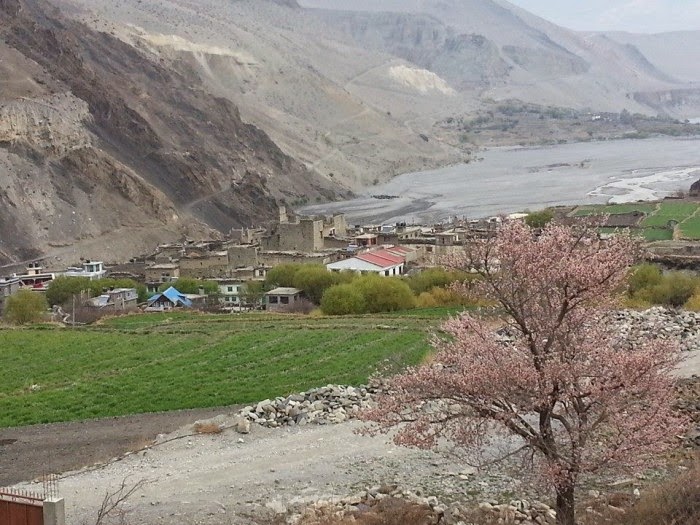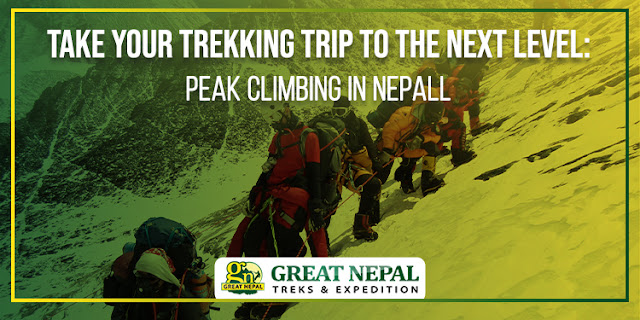Upper Mustang Trek / The Hidden Kingdom
Upper Mustang Trek / The Hidden Kingdom
http://www.greatnepaltravels.com/upper-mustang-trek.html
The Upper Mustang is region is located beyond the great Himalayan range
in the western part of Nepal. Many foreigners who come to Nepal for
trekking would want to include Upper Mustang Trek in their itinerary as
it provides them with the opportunity to peek at the ancient Buddhist
and Tibetan culture that is still prevalent in the region. The major
attractions of the Upper Mustang Trek also known as the Mustang
Exploration are undoubtedly the ancient monasteries, some of which were
built several hundreds of years ago, and the numerous caves that lie
scattered in the region. The culture at Upper Mustang is a beautiful
amalgamation of Tibetan and Buddhist traditions. In the past, it was an
independent state with a separate King ruling the region. Lo-Manthang is
still considered as the Kingdom of Upper Mustang. The other features of
the Upper Mustang Trek are the holy temple of Muktinath and the
magnificent views of the great Himalayan Range in the Mustang and
Annapurna region.
The existing culture of the people of the upper Mustang region greatly resembles to the Tibetan cultures exercised by the Buddhists. Going to the Upper Mustang as part of the trek is one of the great ways to experience the charm of the old Himalayan Mountains and the accompanying desert valleys. Several old and new monasteries and ancient caves fall along the trekking trail. And it comes as a no surprise that the word Mustang comes from two Tibetan words “mun” and “tan” roughly translated as the "fertile plain". Until recently, Mustang had enjoyed its status as an independent state with Jigme Dorje Palbar Bista being the last king of the region. It, however, lost its independent status in October 2008 when the Nepal government passed a ruling to that effect.
Mustang, however, had largely remained in oblivion and was under sort of anonymity even amongst the domestic tourists until the government of Nepal granted access to the western tourists in October, 1991. However, the government still places several restrictions on the number of tourists entering the secluded Himalayan province. The government takes special measures to protect its ancient culture from being influenced by the west. Special permit passes are required to gain entry into the region for the prospective tourists.
The fascinating trek kicks off with a trip to Pokhara from Kathmandu, the capital city. Over a period of 17 days, the trip and trek encompasses several places which include Jomsom, Kagbeni, Lo-Manthang, among others. Tourists will also have the chance to explore the Kali Gandaki River Valley, which is considered as the deepest gorge in the world.
The existing culture of the people of the upper Mustang region greatly resembles to the Tibetan cultures exercised by the Buddhists. Going to the Upper Mustang as part of the trek is one of the great ways to experience the charm of the old Himalayan Mountains and the accompanying desert valleys. Several old and new monasteries and ancient caves fall along the trekking trail. And it comes as a no surprise that the word Mustang comes from two Tibetan words “mun” and “tan” roughly translated as the "fertile plain". Until recently, Mustang had enjoyed its status as an independent state with Jigme Dorje Palbar Bista being the last king of the region. It, however, lost its independent status in October 2008 when the Nepal government passed a ruling to that effect.
Mustang, however, had largely remained in oblivion and was under sort of anonymity even amongst the domestic tourists until the government of Nepal granted access to the western tourists in October, 1991. However, the government still places several restrictions on the number of tourists entering the secluded Himalayan province. The government takes special measures to protect its ancient culture from being influenced by the west. Special permit passes are required to gain entry into the region for the prospective tourists.
The fascinating trek kicks off with a trip to Pokhara from Kathmandu, the capital city. Over a period of 17 days, the trip and trek encompasses several places which include Jomsom, Kagbeni, Lo-Manthang, among others. Tourists will also have the chance to explore the Kali Gandaki River Valley, which is considered as the deepest gorge in the world.
Itinerary
Day 01: Arrival at the Tribhuvan International Airport (TIA), Kathmandu
Day 02: Trek preparation and sightseeing in Kathmandu Valley
Day 03: Drive to Pokhara (910m) 6 hrs
Day 04: Fly to Jomsom (2700m) & trek to Kagbeni (2800m) 3 hrs
Day 05: Trek to Chele (3110m) 5 - 6 hrs
Day 06: Trek to Ghiling (3500m) 5 - 6 hrs
Day 07: Trek to Charang (3620m) 4 hrs
Day 08: Trek to Lo-Manthang (3840m) 3 hrs
Day 09: Exploration of Namgyal Gompa and Tingkhar 4 - 6 hrs
Day 10: Trek to Drakmar (3820m) 6-7 hrs
Day 11: Trek to Syangmochen (3800m) 5 - 6 hrs
Day 12: Trek to Chhusang (2980m) 6 hrs
Day 13: Trek to Muktinath (3800m) 7 hrs
Day 14: Trek to Jomsom (2700m) 6 hrs
Day 15: Morning flight back to Pokhara 25- min
Day 16: Drive back to Kathmandu 6 hrs
Day 17: Departure to TIA, “Farewell!"
(We encourage you to extend your views in case if you want to change the itinerary)



Comments
Post a Comment